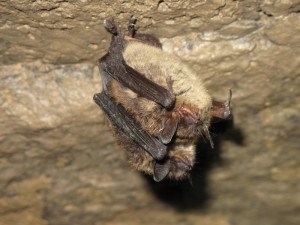
Parks Canada is a recognized world leader in conservation and is working hard to support the recovery of the seven species at risk that call Jasper National Park home.
Under Canada’s Species at Risk Act (SARA), the whitebark pine and two species of bats, the northern myotis and the little brown myotis, are listed as endangered. The woodland caribou, Haller’s apple moss and two bird species—the common nighthawk and the olive-sided flycatcher—are also listed as threatened.
Parks is working on a draft action plan to advance recovery efforts for all of these species in Jasper National Park. Once complete, the draft action plan will be posted on the SARA registry for public input.
Parks is committed to maintaining and restoring ecological integrity that includes survival of native species that are part of the native biodiversity of national parks.
All bats native to Canada are insect-eaters and play an important role in the ecosystem as night-time pollinators and insect-eaters, that is why Parks is working to educate people about bats in Jasper National Park.
A bat can devour half its own weight in insects during a single night of feeding. Hopefully most of those are mosquitoes! Their ability to control insect populations is just one compelling reason to protect bats like the little brown myotis and northern myotis.
During the summer months, bats may roost in buildings and around Jasper during the day. In most cases, this doesn’t pose any problems for building occupants and the bats can be left to roost.
Sometimes it may be necessary to evict the bats; for example due to building renovations or demolition, or for health reasons. One of the proposed recovery actions for bats is to develop best practices for managing bat roosts that will meet the needs of building owners and residents while protecting the bats.
The common nighthawk is also an insect-eater that feeds in the dark. While bats use echolocation to catch insects in the air, common nighthawks rely on their excellent night vision to hunt in the dark. From May through September, listen for their distinctive short, nasal “peet,” particularly at dusk and dawn.
These ground-nesting birds use a variety of open habitats like dunes, grasslands and burnt areas. The priority for common nighthawk recovery in Jasper National Park is to protect these birds and their nesting sites. To do this effectively, a better understanding is needed of what habitats they are using in the park.
Collaboration with the regional birding community to identify these areas is one way we can work together on species at risk recovery.
Species at risk is one of the topics that will be covered at the Jasper National Park Annual Public Forum March 16 from 7 to 9 p.m. at the Sawridge Inn and Conference Centre.
The forum is one of the ways Parks reports to Canadians on its progress in implementing the management plan for Jasper National Park.
Parks Canada
Special to the 51����
